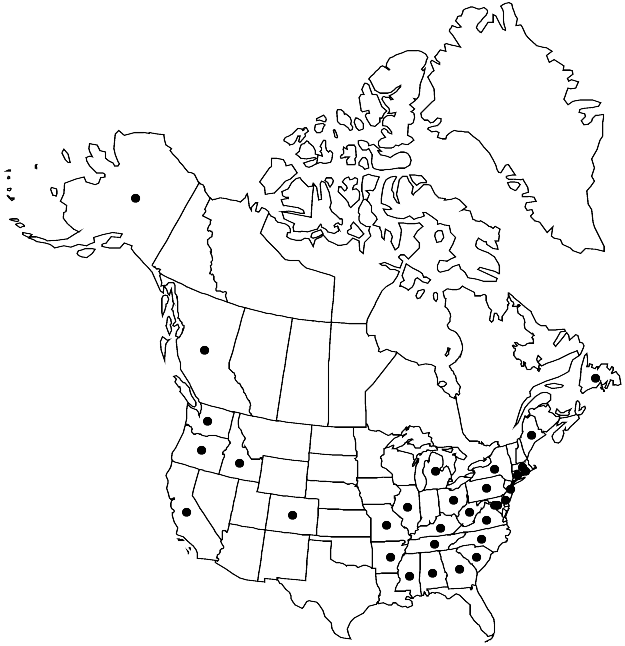Difference between revisions of "Barbarea verna"
Fl. Brandenb. 1: 36. 1860.
FNA>Volume Importer |
FNA>Volume Importer |
||
| Line 11: | Line 11: | ||
|name=Erysimum vernum | |name=Erysimum vernum | ||
|authority=Miller | |authority=Miller | ||
| + | |rank=species | ||
|publication_title=Gard. Dict. ed. | |publication_title=Gard. Dict. ed. | ||
|publication_place=8, Erysimum no. 3. 1768 | |publication_place=8, Erysimum no. 3. 1768 | ||
| Line 17: | Line 18: | ||
|name=Barbarea praecox | |name=Barbarea praecox | ||
|authority=(Smith) R. Brown | |authority=(Smith) R. Brown | ||
| + | |rank=species | ||
}} {{Treatment/ID/Synonym | }} {{Treatment/ID/Synonym | ||
|name=Campe verna | |name=Campe verna | ||
|authority=(Miller) A. Heller | |authority=(Miller) A. Heller | ||
| + | |rank=species | ||
}} {{Treatment/ID/Synonym | }} {{Treatment/ID/Synonym | ||
|name=Erysimum praecox | |name=Erysimum praecox | ||
|authority=Smith | |authority=Smith | ||
| + | |rank=species | ||
}} | }} | ||
|hierarchy=Brassicaceae;Brassicaceae tribe Cardamineae;Barbarea;Barbarea verna | |hierarchy=Brassicaceae;Brassicaceae tribe Cardamineae;Barbarea;Barbarea verna | ||
| Line 46: | Line 50: | ||
-->{{#Taxon: | -->{{#Taxon: | ||
name=Barbarea verna | name=Barbarea verna | ||
| − | |||
|authority=(Miller) Ascherson | |authority=(Miller) Ascherson | ||
|rank=species | |rank=species | ||
| Line 62: | Line 65: | ||
|publication year=1860 | |publication year=1860 | ||
|special status= | |special status= | ||
| − | |source xml=https://jpend@bitbucket.org/aafc-mbb/fna-data-curation.git/src/ | + | |source xml=https://jpend@bitbucket.org/aafc-mbb/fna-data-curation.git/src/f50eec43f223ca0e34566be0b046453a0960e173/coarse_grained_fna_xml/V7/V7_708.xml |
|tribe=Brassicaceae tribe Cardamineae | |tribe=Brassicaceae tribe Cardamineae | ||
|genus=Barbarea | |genus=Barbarea | ||
Revision as of 22:18, 16 December 2019
Biennials or, rarely, perennials; mostly glabrous, except blade auricles ciliate. Stems (1–)2.5–8 dm. Basal leaves: petiole (0.5–)1–6(–8) cm; blade pinnatifid to pinnatisect, 1.5–11 cm, lobes (3–)6–10 on each side, lateral lobes oblong or ovate, 0.4–3 cm × 1–10 mm, not fleshy, margins entire, terminal lobe considerably larger than lateral ones, 1–5 cm × 10–350 mm. Cauline leaves: blade pinnatisect, lateral lobes 1–4, (oblong to lanceolate), margins often entire, rarely coarsely toothed; conspicuously auriculate, auricles ovate or narrowly oblong, (to 10 × 4 mm, margins entire). Fruiting pedicels divaricate to ascending, (2–)3–6(–7) mm, terete, stout (almost as broad as fruit). Flowers: sepals 3–5 × 0.7–1.5 mm, lateral pair slightly saccate basally, margins scarious; petals yellow or pale yellow, oblanceolate to spatulate, (5–)6–7(–8.5) × 1.5–3 mm, base cuneate, apex truncate or emarginate; filaments 3–5 mm; anthers 0.8–1.2 mm; ovules (34–)38–48(–52) per ovary; gynophore to 0.3 mm. Fruits erect to ascending, not appressed to rachis, torulose, subterete to slightly latiseptate, (4.5–)5.3–7(–8) cm × 1.5–2 mm; style stout, 0.2–1(–2) mm. Seeds dark brown, somewhat plump, oblong or quadrate, 1.8–2.5 × 1.4–1.6 mm. 2n = 16.
Phenology: Flowering Mar–Jul.
Habitat: Waste grounds, fields, limestone glades, rocky outcrops, fields, railroad embankments, disturbed sites, roadsides
Elevation: 0-1600 m
Distribution

B.C., Nfld. and Labr. (Nfld.), Ala., Alaska, Ark., Calif., Colo., Conn., Del., D.C., Ga., Ill., Ind., Ky., Maine, Md., Mass., Mich., Miss., Mo., N.J., N.Y., N.C., Ohio, Oreg., Pa., R.I., S.C., Tenn., Va., Wash., W.Va., Europe, Asia, n, s Africa, introduced also in Mexico, South America (Argentina, Brazil, Chile), Australia.
Discussion
Selected References
None.